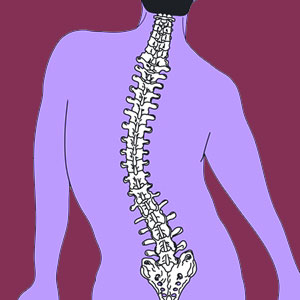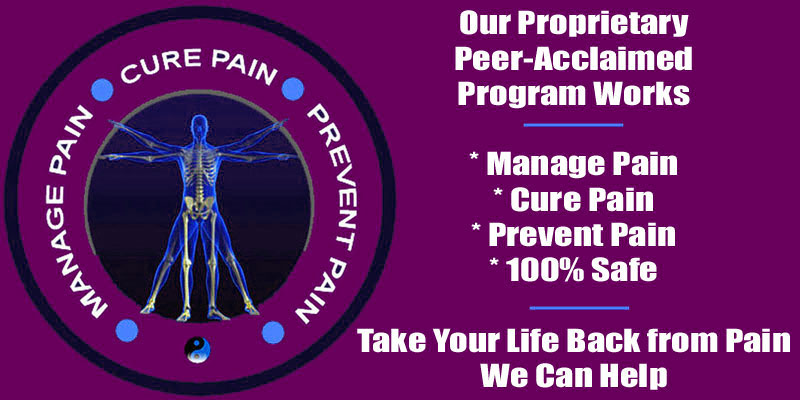
The consequences of scoliosis can affect mind and body alike. Scoliosis can enact changes in the spinal anatomy and influence physical functionality. Particular circumstances in life can also interact with scoliosis and mutually influence each other. While scoliosis is usually a harmless structural condition, some cases can become problematic. Even minor cases that are typically asymptomatic can become pathological given certain scenarios that might arise. All of these factors qualify to be called consequences of atypical side-to-side spinal curvature.
In this resource section, we concentrate on detailing the physical effects on the body that might occur as a result of a scoliotic curvature in the backbone. We will discuss how scoliosis can reshape the spinal anatomy and how life situations can change due to the existence of scoliosis, as well.
The Physical Consequences of Scoliosis
We are well known for shedding light on the psychoemotional effects of atypical spinal curvatures, since this is a topic much neglected during the medical management of scoliosis. However, in this article, we also show that side-to-side spinal curvature can create dramatic alteration in form and functionality, both internally and externally.
Patients who suffer life modifications as a result of scoliosis must be knowledgeable about the influence their spinal curvature has on their current symptomology or circumstances. This is vital if the patient is to play an active role in resolving their anatomical concerns and minimize the negative consequences of scoliosis on their lives. To this end, we have prepared a rather extensive list of essays that provide full coverage of how scoliosis can influence life in the section below. Please read each dissertation that applies to you or your child in order to complete your knowledge base regarding scoliotic curvatures.
Discussions on the Consequences of Spinal Curvature
Below, please enjoy our essays examining particular ways that scoliosis can influence the appearance and function of the body. We also discuss several distinct life situations where scoliosis might factor negatively into the equation. As each new treatise is published, it will be added to the following list:
It is possible to suffer a pinched nerve from scoliosis within the central spinal canal or in the neuroforaminal canals.
Spinal stenosis from scoliosis is a common event when abnormal spinal curvature combines with other universal and case-specific conditions that might narrow the central vertebral canal. Similarly, scoliosis neuroforaminal stenosis often occurs when irregular spinal curvature exacerbates a loss of patency in select neural foramina.
Scoliosis spinal instability can be caused by very severe curvatures or might occur in less dramatic curvatures when other contributing factors are also present.
Scoliosis disability is usually only a consequence of the very worst cases of pathological abnormal side-to-side curvature.
Do you have severe scoliosis and can’t breathe? This is because some cases of scoliosis can compress the lungs. Diminished lung function is one of the major justifications for scoliosis surgery.
Likewise, when scoliosis is affecting heart function, surgery is usually unavoidable.
Scoliosis pain that is experienced while sitting or while standing might be related to skeletal problems causing mechanical dysfunction, but is usually created by soft tissue problems that are related to muscular issues.
Does scoliosis cause herniated discs? This question is often asked by scoliosis patients who also demonstrate intervertebral herniation near the area of their curvatures.
Scoliosis spinal cord injury is a rare event that is usually linked to the very worst cases of side-to-side spinal curvature and is typically only a patient’s fate if no treatment is available.
Scoliosis nerve damage is slightly more common, but is usually avoidable when proper diagnosis of neurological threat escalates treatment to preserve motor functionality and sensation.
Scoliosis paralysis is one of the most catastrophic results of side-to-side backbone curvature, but rarely occurs in patients in medical care.
Scoliosis cauda equina syndrome can occur when multiple lumbar and sacral nerve roots are compressed within the central vertebral canal.
Scoliosis hyperlordosis is much more common than scoliosis hypolordosis, but both can occur in particular case-specific patient circumstances.
Similarly, scoliosis hyperkyphosis is much more prevalent than scoliosis hypokyphosis, since the latter condition is rarely seen clinically in association with side-to-side spinal curvature.
Scoliosis in the elderly can be related to injury, normal spinal degeneration or low bone density. Often several factors combine to create atypical spinal curvature in seniors.
Scoliosis in children can affect young people from before their birth until they reach maturity. Scoliosis is a condition that can strike at literally any age.
Obesity and scoliosis are related in possible causation, but are also linked in symptomology. Obesity is a health crisis that exacerbates any other wellness concern and can definitely escalate scoliosis to symptomatic degrees.
Pregnancy scoliosis can be a direct result of carrying a baby, but is usually just another issue that must be dealt with by pregnant women who also happen to demonstrate atypical spinal curvatures.
Summarizing the Consequences of Scoliosis
Scoliosis is much like other spinal structural issues that are usually inherently innocuous, but can become real trouble in select profiles. Other conditions, such as degenerative disc disease, various abnormalities of lordosis and kyphosis, bulging intervertebral discs, spinal osteoarthritis and more, also fall into the category of potential negative life factors that originate in the spine, even though none of these conditions are inherently pathological unto themselves.
If you need immediate help managing the consequences of scoliosis in your life, our proprietary pain relief program is online 24/7 to assist you.
Scoliosis > Consequences of Scoliosis






